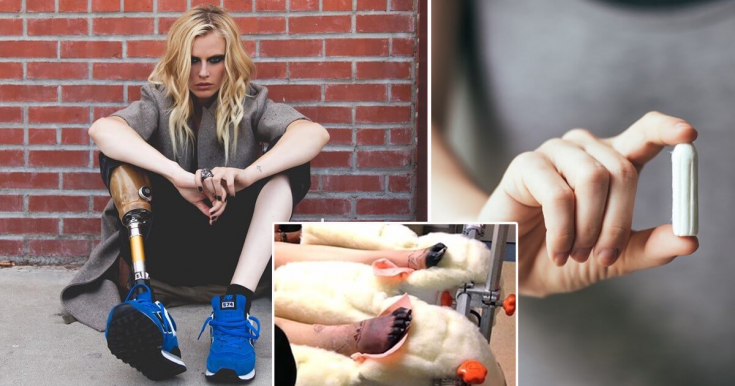There is a lot of talk about the dangers of disposable feminine hygiene products such as pads and tampons. And we are talking not only about concern for the environment, because these products pollute the planet in huge volumes, but also about things that are much more important – Women's Health.
Unfortunately, research on the safety of tampons is very limited. But it is their woman who places them in the vagina, which instantly absorbs any substances, thanks to the colossally developed vascular network.
At estet-portal.com we figured out what can harm tampons, and why gynecologists should recommend women to refrain from frequent use of these personal hygiene products.
- Tampon harm: why there is so little information about their safety
- Why synthetic fibers in tampons are bad
- Dioxins and pesticides: what chemicals are found in tamposnah
Tampons are harmful: why there is so little information about their safety
It is said that if tampon safety panels were made up of women, or if men who approve safety studies of these personal care products were menstruating, the production ban would have been banned a long time agomost tampons.
The fact is that sometimes it is not just a matter of health, but also a matter of life and death.
Toxic shock syndrome remains one of the most well-known health effects of feminine hygiene products. Cases of this horrifying and potentially fatal complication of tampons increased as manufacturers began using four synthetics in highly absorbent tampons.
Read the most interesting articles in Telegram!
So, after several high-profile cases, today the only synthetic substance allowed in tampons is viscose, which is often blended with cotton.
A small number of cases of toxic shock syndrome continue to be reported each year.

All synthetic fibers cause the production of large amounts of toxins absorbed by the vaginal mucosawhich is highly vascularized.
Why synthetic fibers in tampons are bad
Synthetic fibers are more absorbent than cotton, so they are often used to produce tampons with strong absorbency.
European Guidelines for the Management of Bacterial Vaginosis
At the same time, they concentrate menstrual proteins to a greater extent than cotton and provide "an ideal physico-chemical environment"; to produce toxins.
Encourage patients to use less absorbent tampons for minimal periods of time.
Cotton – it is the best material for making tampons, but even tampons made of this material can cause tiny tears in the vagina which can allow other chemicals
are sometimes present in trace amounts in tampons and pads as a by-product of bleaching cotton and wood pulp. A 2002 study simulated exposure to dioxins from four brands of tampons and estimated them to be negligible by comparison. with exposure through food.
Hormonal contraception: features of oral contraceptive prescription However, no studies have tested
diffusion of dioxins fromtampons in vivo. According to current research, even minor exposure to dioxins can accumulate in the body with potential cumulative effects, and the average woman uses about 11,400 tampons in a lifetime. The issue of pesticides in cotton, which is used in the manufacture of feminine hygiene products, has also been repeatedly raised. A study of one brand of tampons showed as many as 8 different pesticides in these hygiene products.
The absorption of these chemicals may be minimal, but unfortunately there is no data to support this information. In this connection, the gynecologist should recommend to his patientsto refrain from using tampons, to use more gentle personal hygiene products
, such as pads, which still have less contact with the mucous membrane.
More useful and interesting information on our channel onYouTube:






